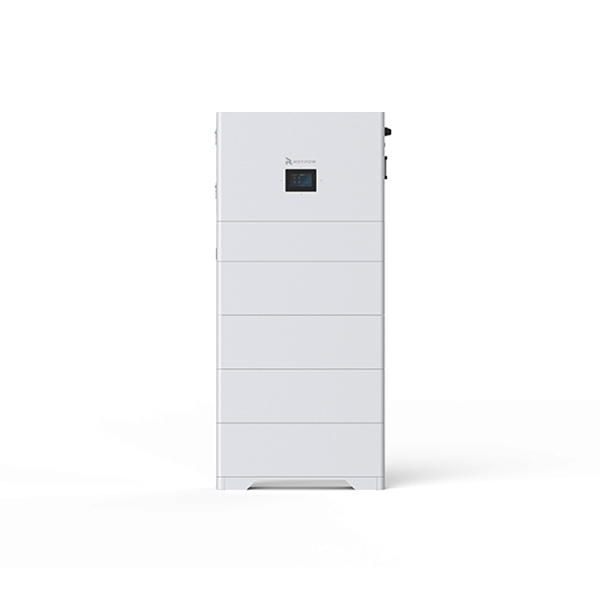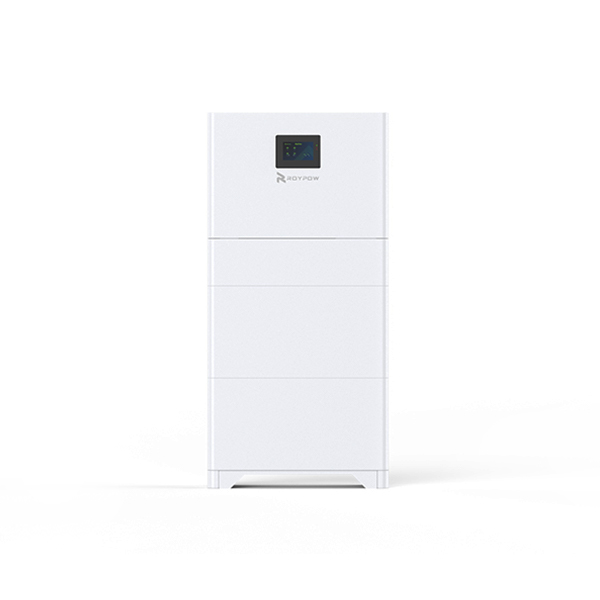Residential Energy Storage Syestems
-

All-in-One System
-

Three-Phase All-In-One System
-

Three-Phase All-In-One System
-

Three-Phase All-In-One System
-

Three-Phase All-In-One System
-

Three-Phase All-In-One System
-

Three-Phase All-In-One System
-

Three-Phase All-In-One System
-

All-in-One System
-

RBmax5.1
5.1 kWh - 40.8 kWh
LiFePO4 Battery Module
Solar Inverters
Solar Batteries
Contact Us

Please fill in the form below Our sales will contact you as soon as possible
Tips: For after-sales inquiry please submit your information here.
-
1. What is the difference between off-grid energy storage and grid-connected energy storage?
+Off-grid energy storage systems operate independently of the utility grid, making them ideal for remote areas or situations where grid access is unavailable or unreliable. These systems rely on renewable energy sources, such as solar panels, along with batteries to store excess energy for later use, ensuring continuous power even when energy generation is low. In contrast, grid-connected energy storage systems are integrated with the utility grid, allowing them to store energy when demand is low and release it when demand increases.
-
2. Should I choose off-grid energy storage or grid-connected energy storage?
+Choosing between off-grid and grid-connected energy storage depends on your specific needs. Off-grid energy storage systems are ideal for those in remote areas without reliable grid access or for individuals seeking complete energy independence. These systems ensure self-sufficiency, especially when paired with renewable energy sources like solar, but they require careful planning to guarantee sufficient storage for continuous power supply. In contrast, grid-connected energy storage systems offer more flexibility, allowing you to generate your electricity using solar panels while remaining linked to the grid for additional power when needed, which can lead to cost savings and increased efficiency.
-
3. What is the difference between three-phase electricity and single-phase electricity?
+The difference between three-phase and single-phase electricity is power distribution. Three-phase electricity uses three AC waveforms, delivering power more efficiently, and is commonly used to meet higher power demands. In contrast, single-phase electricity uses one alternating current (AC) waveform, providing a consistent power flow for lights and small appliances. However, it is less efficient for heavy loads.
-
4. Should I buy a three-phase all-in-one home energy storage system or a single-phase all-in-one home energy storage system?
+The decision between a three-phase or single-phase all-in-one home energy storage system depends on your household's power needs and electrical infrastructure. If your home operates on a single-phase supply, which is common for most residential properties, a single-phase energy storage system should be sufficient for powering everyday appliances and devices. However, if your home uses a three-phase supply, typically seen in larger homes or properties with heavy electrical loads, a three-phase energy storage system would be more efficient, ensuring balanced power distribution and better handling of high-demand equipment.
-
5. What is a Hybrid Inverter and what scenarios are it mainly suitable for?
+Hybrid inverters convert direct current (DC) electricity generated by solar panels into alternating current (AC), and they can also reverse this process to convert AC power back into DC for storage in a solar battery. This allows users to access stored energy during power outages. They are suitable for homes and businesses that aim to optimize solar energy usage, reduce reliance on the grid, and maintain a stable power supply during outages.
-
6. Is there any incompatibility problem when using a ROYPOW Hybrid Inverter with other brands of energy storage batteries?
+When using a ROYPOW hybrid inverter, potential incompatibility issues may arise due to differences in communication protocols, voltage specifications, or battery management systems. To ensure optimal performance and safety, it is essential to verify compatibility between the inverter and the batteries before installation. ROYPOW recommends using our own battery systems for seamless integration, as this guarantees compatibility and maximizes efficiency.
-
7. How much does it cost to build a home energy storage system?
+The cost of building a home energy storage system can vary significantly based on several factors, including the size of the system, the type of batteries used, and installation costs. On average, homeowners can expect to spend between $1,000 and $15,000 for a residential energy storage system, which typically includes the battery, inverter, and installation. Factors such as local incentives, the brand of equipment, and additional components like solar panels can also influence the overall cost. Please consult with ROYPOW to get a tailored quote for your specific needs.
-
8. How to solve installation problems when purchasing a ROYPOW energy storage system?
+To solve installation problems when purchasing a ROYPOW energy storage system, first, ensure that you have a qualified and experienced installer. It’s essential to carefully review the installation manual provided with the system, as it contains crucial guidelines and specifications. If issues arise, contacting ROYPOW’s customer support for technical assistance; we can offer expert advice and troubleshooting tips. Communication with your installer throughout the process can also help address potential problems early on, ensuring a smoother installation experience.
-
9. How much does a home solar power system cost?
+The cost of a home solar power system varies widely depending on factors such as the system size, type of solar panels, installation complexity, and location. Please consult with ROYPOW to get a tailored quote for your specific needs.
-
10. How does a home solar power system work?
+A home solar power system operates by converting sunlight into electricity through solar panels. These solar panels capture sunlight and produce direct current (DC) electricity, which is then sent to an inverter that converts it into alternating current (AC) electricity for use in the home. The AC electricity flows into the home's electrical panel, distributing power to appliances, lights, and other devices. If the system includes a battery, excess electricity generated during the day can be stored for later use during nighttime or power outages. Additionally, if the solar system produces more electricity than needed, the surplus can be sent back to the grid. Overall, this setup allows homeowners to harness renewable energy, reduce reliance on the grid, and lower electricity bills.
-
11. How to install home solar power systems?
+Installing a home solar power system involves several key steps. First, assess your home’s energy needs and roof space to determine the appropriate system size. Next, choose solar panels, inverters, and batteries based on your budget and efficiency requirements. Once you have selected the equipment, hire an experienced solar installer to ensure a professional installation that meets local codes and regulations. After installation, the system will need to be inspected to ensure compliance, and then it can be activated.
-
12. How to size off grid solar system?
+Here are four steps recommended to follow:
Step 1: Calculate your load. Check all of the loads (home appliances) and record their power requirements. You need to make sure what devices are likely to be on simultaneously and calculate the total load (peak load).
Step 2: Inverter sizing. Since some home appliances, particularly those with motors, will have a large current inrush on startup, you need an inverter with a peak load rating matched to the total number calculated in Step 1 to accommodate the startup current impact. Among its different types, an inverter with a pure sine wave output is recommended for efficiency and reliability.
Step 3: Battery selection. Among the major battery types, the most advanced option today is the lithium-ion battery, which packs more energy capacity per unit volume and offers advantages such as greater safety and reliability. Work out how long one battery will run a load and how many batteries you need.
Step 4: Solar panel number calculation. The number depends on the loads, efficiency of the panels, geographic location of the panels with respect to solar irradiance, inclination and rotation of the solar panels, etc.
-
13. How many batteries for home backup?
+Before you can determine how many solar batteries are required for home backup, you need to consider a few key factors:
Time (hours): The number of hours you plan to rely on stored energy per day.
Electricity demand (kW): The total power consumption of all the appliances and systems you intend to run during those hours.
Battery capacity (kWh): Typically, a standard solar battery has a capacity of about 10 kilowatt-hours (kWh).
With these figures in hand, calculate the total kilowatt-hour (kWh) capacity needed by multiplying the electricity demand of your appliances by the hours they'll be in use. This will give you the required storage capacity. Then, assess how many batteries are needed to meet this requirement based on their usable capacity.
-
14. How much does a home battery backup cost?
+The total cost of a complete off-grid solar system depends on various factors such as energy requirements, peak power requirements, equipment quality, local sunshine conditions, installation location, maintenance and replacement cost, etc. Generally, the cost of off-grid solar systems averages about $1,000 to $20,000, from a basic battery and inverter combination to a complete set.
ROYPOW provides customizable, affordable off-grid solar backup solutions integrated with safe, efficient, and durable off-grid inverters and battery systems to empower energy independence.
-
15. How long does a home battery backup last?
+The lifespan of a home battery backup typically ranges from 10 to 15 years, depending on the type of battery, usage patterns, and maintenance. Lithium-ion batteries, commonly used in home energy storage systems, tend to have longer lifespans due to their efficiency and ability to handle multiple charge and discharge cycles. To maximize the battery's lifespan, proper care, such as avoiding extreme temperatures and regularly monitoring charge cycles, is important.
-
16. What is residential energy storage?
+Residential energy storage refers to the use of batteries in homes to store electricity for later use. This stored energy can come from renewable sources like solar panels or the grid during off-peak hours when electricity is cheaper. The system allows homeowners to use stored energy during periods of high demand, power outages, or at night when solar panels aren't generating electricity. Residential energy storage helps increase energy independence, lower electricity bills, and provide backup power for essential appliances during outages.
-
17. Is residential renewable energy storage scalable?
+Yes, residential renewable energy storage systems are scalable, allowing homeowners to expand their storage capacity as their energy needs grow. For instance, ROYPOW energy storage systems are designed to be modular, meaning additional battery units can be added to increase storage capacity for longer backup durations. However, it’s important to ensure that the inverter and other system components are capable of handling the expanded capacity to maintain optimal performance.






























